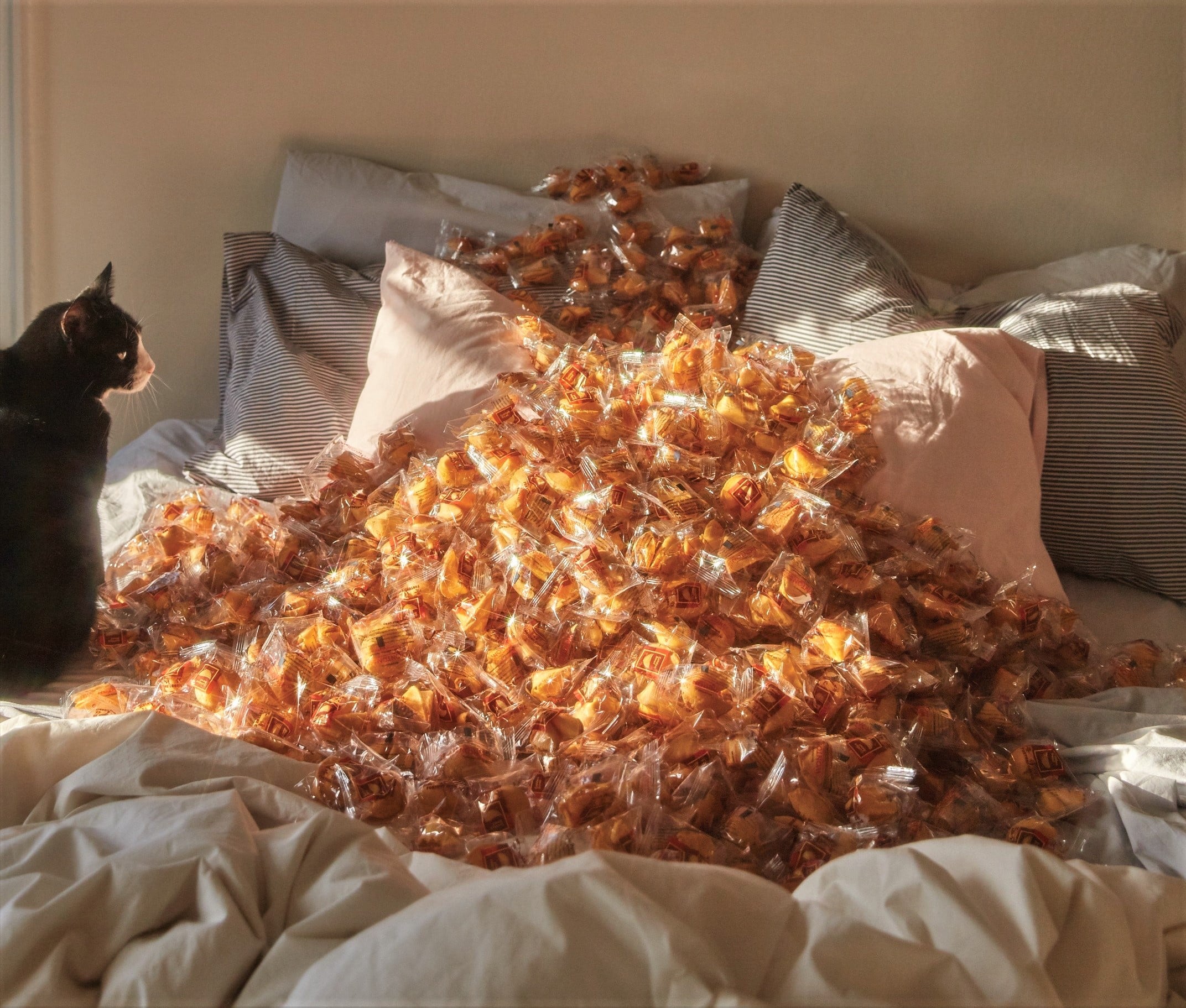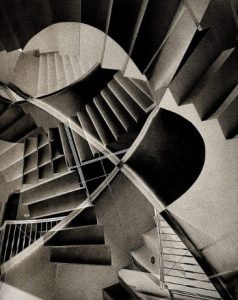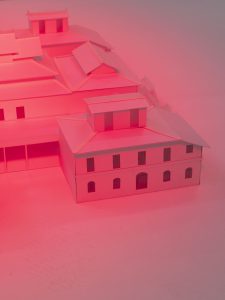‘”הכרה.צדק.ריפוי” היא מפעולות האמנות המרגשות שראיתי בשנים האחרונות. שקיות קניות מניילון לבן-שקוף ואליהן, בשחור, דימוי של אישה, תינוק וגבר והכיתוב -“הכרה.צדק.ריפוי”.
השקיות, המיועדות להתמלא בשפע פירות וירקות תלויות מקרסים ב”רוזי כהן פירות”, חנות שהיא תחנה קבועה בסיבוב הקניות השבועי שלי בשוק הכרמל. הן מנכיחות את החסר: ילדי תימן, מזרח ובלקן שנעלמו, שכפי הנראה נלקחו-נחטפו ממשפחותיהם בשנות המדינה הראשונות, וכאב האובדן לא קהה במהלך השנים. 
את הדימוי שעל השקיות לא זיהיתי. בעל החנות, אותו שאלתי מי יצר את הדימוי, הפנה אותי ללוגו של עמותת עמר”ם עמותה העוסקת ביצירת מודעות לפרשת ילדי תימן, בלקן ומזרח, על ידי ארכיון אינטרנטי של עדויות ופעולות ציבוריות.
הפעולה הפרטית שנעשתה בשוק הכרמל (17 יולי, 2020) מרשימה: הפצה של דימוי, הכנסתו לקונטקסטים בלתי צפויים, יצירת במה עצמאית. היה משהו מערער , טורד ומרתק בלוגו שהציץ ביינות אשכולות השקיות הצבעוניות העמוסות שאנשים נושאים כשדעתם נתונה לענייני היום, ודימוי הילד וההורים מרחף ביניהם כמו רוח זיכרון.
הרעיון של אובייקט המתחיל את נוכחותו במרחב הציבורי כערמה, כמצבור, שפעולה של לקוחות/צופים מביאה להפצתו במרחב מזכירה את העבודות של פליקס גונזלס- טורס Félix González-Torres (1957 –1996), על ערמות הכרזות שהזמין צופים לקחת, או ערמות סוכריות שצופים הוזמנו להתכבד בהן והן הלכו ותמעטו לאורך התערוכה . ערמות כרזות, עם צילומי אובייקטים ,היוו את העבודה של Edson Chagas בביתן האנגולי , זוכה פרס הביתן הלאומי בוונציה ב 2013 . הצופים לקחו כרזות והרכיבו לעצמם מעין קטלוג אובייקטים שנזרקו לרחוב בלואנדה. כוחו של הדימוי ‘”הכרה.צדק.ריפוי” בחזרתיות, באופן בו הפגיעות והשבירות שהוא עוסק בו הופך לאובייקט – שקית מרשרשת, הדפס שנמחק.

הדמויות מזכירות את הציורים של ארשל גורקי הארמני-אמריקאי, שצייר את זיכרונותיו כילד לפני הג’נוסייד בארמנים. הכיתוב “הכרה.צדק.ריפוי” מעלה על הדעת את הטרמינולוגיות של וועדות הצדק והפיוס בדרום אפריקה.

The Artist and His Mother
1926–c. 1936
ולמרות שמדובר בדימוי ,בפעולה, ואופן ההפצה שנראו לי מטלטלים ממש התברר שאלו נותרו ללא הד, שרבים לא שמו לב לדימוי יוצא הדופן. אולי עדות עצובה לאופן בו אינפלציית הדימויים הקהתה את כוחם.
האקדמיה של החלון – הרצאות ד”ר סמדר שפי ב ZOOM
על ציור ישראלי מאז שנות ה 90 –מחשבות על המהפכה השקטה.
27 יולי 2020 ,יום שני – 20:00
ציור ,על כל גווניו, מהווה חלק חשוב בעולם האמנות הישראלי. השינוי שחל מאז אמצע שנות ה 90 ביחס לציור הפיגורטיבי, זה שנחשב בעבר לאנכרוניזם והיום מרכזי, הוא לא פחות ממהפכה.
תשלום
המחיר להרצאה 75 ₪ . אורך המפגש כשעה ורבע .תשלום ב PAYPAL BIT או בהעברה בנקאית להרשמה שלחו אישור תשלום עם טלפון וכתובת אימייל ל WhatsApp 0507431106

“Recognition.Justice.Healing” – Art action in the Carmel Market
Posted on July 22, 2020 by Smadar Sheffi
This is one of the most moving art actions I have seen in recent years: white plastic bags for carrying fruits and vegetables, imprinted in black with an image of a man and a woman holding a baby and the slogan, “Recognition.Justice.Healing.”
The market bags are hung on a hook at the Rosie Cohen Fruit shop, a regular stop on my weekly round at the Carmel outdoor market. They make the absent present, the missing children from newly-arrived immigrants from Yemen, Arab and Balkan countries in the early years of the state, apparently taken/kidnapped. The families’ pain of their loss has in no way dulled over the years. I did not identify the image, and when I asked the owner of the shop who made it, he referred me to the AMRAM logo, the name of the association (an acronym for The Yemenite, Mizrahi and Balkan Children Affair) engaged in raising awareness through its internet archive of testimonies and public action.
The grassroots activism in the Carmel Market is impressive: disseminating an image, introducing it into unexpected contexts, creating an independent platform. It is subversive, disturbing, and fascinating to see the logo peering out from the clusters of the colorful plastic bags loaded with market bounty carried by shoppers going about their business, while the image of the child and its parents hovered among them like a ghost of memory.

The Artist and His Mother
1926–c. 1936
The idea of an object whose presence in the public space begins as a stack or cluster, disseminated by the action of customers or viewers, brings to mind works by Félix González-Torres (1957-1996), who installed stacks of posters inviting viewers to take one, or heaps of candies which grew smaller during the exhibition, as people took from what was offered. Stacks of posters with photographs of objects were made by Edson Chagas in the Angolan pavilion, which was awarded the best national pavilion at the Venice Biennale 2013. Visitors took posters to create a kind of individually-made catalog of discarded objects found and photographed on the streets of Luanda.
The power of the image with the words “Recognition.Justice.Healing,” lies in its repetitiveness and the way in which the vulnerability and fragility it engages becomes an object – a rustling grocery bag, a print that is erased.
The figures are reminiscent of paintings by Armenian American artist Arshile Gorky, who painted his boyhood memories before the Armenian genocide. The words “Recognition.Justice.Healing” evoke the terminology of South Africa’s Truth and Reconciliation Commissions whose stated mission was “Healing our Past.”
Although this is an image and an action, a mode of dissemination that seems to me genuinely disturbing, it did not create shock waves. Most people paid no attention to the unusual image. This is perhaps sad testimony to the way the inflation of images has diminished their power.







